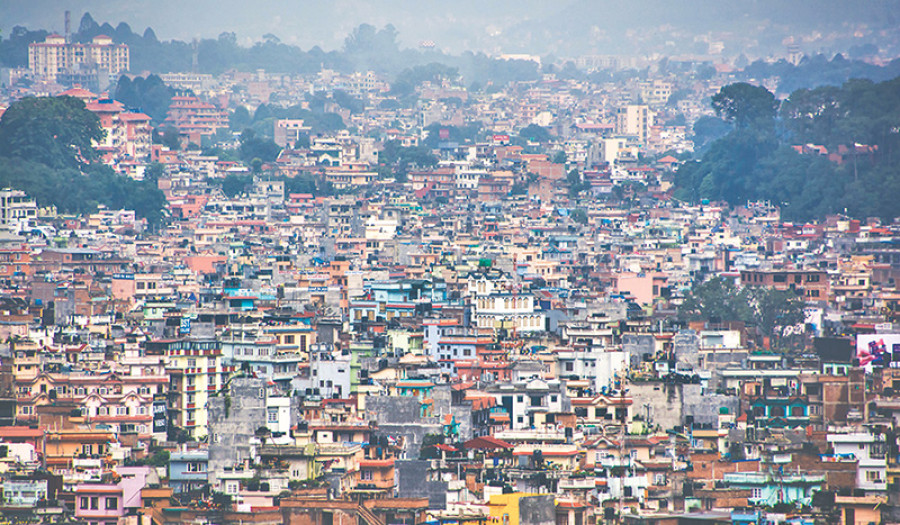Miscellaneous
Existence small, not shrunken
For any reader of this country’s English language newspapers, Shradha Ghale is a familiar name. Her non-fiction reporting has appeared in a great many periodicals and newspapers, including this one.
Pranaya SJB Rana
For any reader of this country’s English language newspapers, Shradha Ghale is a familiar name. Her non-fiction reporting has appeared in a great many periodicals and newspapers, including this one. Her writing has always been expansive and incisive, interrogating power structures wherever she goes. And at the centre of her writing has been the marginalised, the dispossessed, the indigenous—often all one and the same. All the while, she has written with candour, compassion and courage.
And so, it is not surprising to find the same values in her fiction. Shradha Ghale’s The Wayward Daughter is a book filled with heart. Shradha looks at the Tamule household with the eye of a journalist but little of the distance. It is a loving, compassionate and artful portrait of a middle-class family attempting to navigate the complex socio-political morass that was Kathmandu in the 90s (and now more than ever, some might say).
Gajendra Tamule—or Tamule ji, as he’s called—a Gurung immigrant to Kathmandu, falls in love with and marries Premkala Limbu, the daughter of a British army veteran and a vigorous, stalwart mother who is by turns entertaining and malevolent. The Tamule household have two daughters, Sumnina and Numa, who are both smart and resolute like their mother, but also willful and rebellious, just like their mother. In their climb from the bottom rung to a fairly middling but comfortable space on Kathmandu’s social ladder, the Tamules are joined by two nieces—hardworking and obedient Ganga, and the stylish, defiant Manlahari.
The story then is (mostly) all about women, from cantankerous Boju to taciturn Premkala to wayward Sumnima. And it is a welcome change from the brooding male protagonists that most Nepali writing in English tends to gravitate towards (myself not excusing). Shradha’s women are beautifully characterised. Sumnima as the protagonist receives the most attention and thus, comes alive wonderfully. Her thoughts, beliefs, desires and fears all arise organically, never a clumsy attempt at sketching a female character who is no more than a vessel for the writer’s own ideas of what femininity or womanhood should be. Whether navigating class and caste dynamics at her exclusive school or heartbreak and jealously with an older radio jockey, Sumnina’s labours are written with heartwarming empathy and a deep-seated nostalgia for the 90s, a fairly uneventful decade all-too-often ignored in Nepali writing’s obsession with ‘social realism’ and stories of war, conflict and hardship.
Nepali writing does not need to limit itself to toil and misery, as Shradha shows. The Tamule household has its fair share of troubles but they are not desperately poor, and they are not caught up in an inextricable web of forces beyond their control. Theirs is a story of a family attempting to take the till of their own boat and navigate their own way in the world. They wish to make something of themselves, as homeowners, as NGO-workers, as people who can afford a second telephone, a second television, a brand new almirah. Their rise is charted in materiality, not socio-political consciousness, and at least in fiction, it is what Shradha is best at. When her lens remains focused, her characters breathe and come alive, but the broader her ambit, the less convincing her narrative.
Lungla, for instance, is almost a caricature of the margins. Poor and desperate, Lungla looks always to Tamule ji and his benevolence. The changes that the 90s wrought even on spaces like Lungla are unexplored. The empathetic eye is reserved for the residents of Kathmandu and their lives; Lungla falls by the wayside. This difficulty is also present in the tail end of the novel, when the civil war intrudes jarringly on the narrative. The way the civil war arrives feels shoehorned and uncomfortable. This aspect of the novel could’ve used the subtlety and ease with which Shradha weaves the first two-thirds of the novel.
A few characters in the novel too receive short shrift. Although the story is primarily Sumnina’s, the younger daughter, Numa, is woefully underdeveloped. The flashes that we get of her proclivities go unexplored. She’s the better student but also the one who begins to receive phone calls from boys long before her elder sister. Her choices for subjects of study are decidedly unorthodox—English and psychology. Her letters to Sumnima from boarding high school in India are full of wisdom and adventure, leaving the reader to wonder just what else is happening with Numa and her life as Sumnima chases after the RJ.
Even Manlahari, who is one of the most interesting characters in the book, arrives like a whirlwind and then is gone before we get to fully understand her. She comes into the Tamule household in much the same way that Ganga, the other niece, does. But while Ganga effectively assumes the role of maid in the house, cheeky Manlahari manages to eschew responsibility and, in a manner, becomes a fuller person. The parallel set up between Ganga and Manlahari is an interesting one but it is one that bears deeper exploration.
The parallels between Ganga and Manlahari beg another, more important question that speaks directly to the title of the novel. Though Sumnima is ostensibly the protagonist and thus, the titular wayward daughter, how wayward is she really? Numa and Manlahari appear far more rebellious and obstinate than Sumnima, who is only defiant when compared to the meek Ganga. Sumnima never really opposes her parents or what society at large wants from her. Her failures at school are not born out of an obstinacy but rather, distraction and inadequacy. In the end, she passes her high school and goes on to study medicine, exactly what her parents wanted of her. Where then is the waywardness? Perhaps what Shradha wishes us to question is what waywardness entails for a young Kathmandu woman, a young middle-class Kathmandu woman, a young, Janajati, middle-class Kathmandu woman?
Shradha’s novel is an important one, not least because the Nepali writing in English scene is populated primarily by men and even among the women writers, there is a distinct preponderance of the Bahun-Chhetri combine (again, myself not excusing). The perspective that Shradha Ghale brings is necessary and long overdue. But it would be a disservice to Shradha’s talents as a writer to simply characterise the merits of this novel as perspective. It is a finely wrought novel, astutely observed and honestly told. Shradha’s prose is simple, direct and unadorned, and does not come with the baggage of overwrought prose that seems to plague so many.
As a fervent admirer of Shradha’s non-fiction writing, I must admit that I was hesitant to read her novel. But this book lays any such timidity to rest. The Wayward Daughter is a confident debut, written with heart and empathy.

The Wayward Daughter
Author: Shradha Ghale
Publisher: Speaking Tiger
Page: 280
Price: Rs 560




 14.12°C Kathmandu
14.12°C Kathmandu










